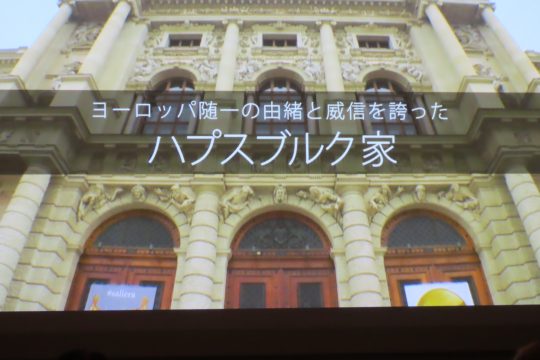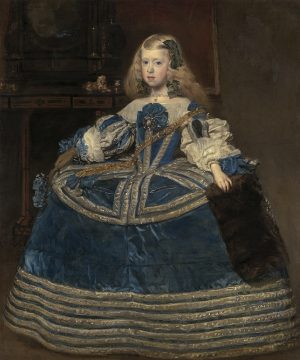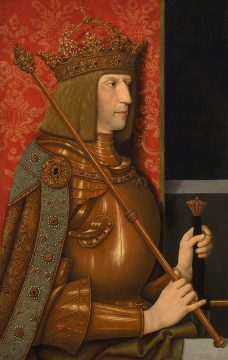
The National Museum of Western Art, from 19th October 2019 (Sun) to 26th January 2020, commemorates the 150th anniversary of the friendship between Japan and Austria
"Hapsburg Exhibition 600 Years of Empire Collection History"
is held. The press conference for this exhibition was held, so we will deliver the situation this time.
Purpose of holding

The Habsburg family's collection boasts the world's largest quantities and rooms.
After advancing to Austria at the end of the 13th century, the Habsburgs family built a large empire there. It is the first in Europe to have succeeded the Roman emperors since the 15th century and ruled the successor Austrian empire after the Napoleonic war.
The Habsburgs are also known for building their world-leading collections in terms of mass, taking advantage of their wealth of goods and networks.
With the cooperation of the museum, this exhibition, which commemorates the 150th anniversary of the establishment of diplomatic relations between Austria and Japan, will display about 100 items such as pictures, prints, crafts, tapestry and armor. From Maximilian I, who laid the foundation of the collection, to Franz Josef I, who is also the builder of the Vienna Art History Museum, introducing the unique characters of the family, the history of the collection and the characteristics of each period I will emphasize the trend.
What is the Habsburg family?

Brilliant clan, its amazing history.
The Habsburgs are a large family that originates from the upper Rhine.
Expanded to Austria at the end of the 13th century and extended control to Central Eastern Europe, the Netherlands, Spain, etc. from that location, and acquired territory in Latin America and Asia in the age of Carl V (1500-58). We have built the Sun Empire of the Sun.
Since the 15th century, he has been the emperor of the Holy Roman Empire for generations, and after dismantling the Holy Roman Empire by the Napoleonic War, he becomes the emperor of the succeeding Austrian Empire. One of Europe's finest masters who ruled vast territories and diverse ethnic groups for centuries until the end of the empire after the First World War.
Introduction of exhibited works
We will introduce some of the works displayed in this exhibition.
Bernhard Striegel and his studio or studio work
"Maximilian I as King of Rome"
Oil painting / board around 1507/08
The last knight. The beginning of a great family.
At the beginning of the exhibition, paintings and weapons related to the Holy Roman Emperor Maximilian I will be displayed.
Maximilian I, who played an important role in the development of the Habsburg family, was the person who laid the foundation for the family's collection. Portraits, among other things, were an important tool to show the family lineage.
Diego Velázquez “Margarita Teresa the Princess of Blue Dress”
1659, oil on canvas

Can you become a bride?
In the middle of the 16th century, the Habsburgs divided into Austrian and Spanish descent, and portraits were used as a means of informing each other's status.
The late masterpiece of Velázquez, Princess of the Blue Dress, Margarita Teresa, was also created to convey to Leopold I, the emperor of the Holy Romans, the appearance of a young daughter-in-law.
Marie Louise Elisabeth Vige-Leblanc "Portrait of Queen Anne Marie Antoinette of France"
1778, oil on canvas

The queen who was swallowed by the revolution.
At this exhibition, many portraits of Habsburgs people who lived in the turbulent times are exhibited.
Here is a portrait of Marie Antoinette by Le Blanc. The superior daughter of Maria Theresa's youngest daughter, Maria Antoinette, who was ruled as a "national mother" and ruled a vast territory, was repulsed from the people by persecution and popularization, and lost his life in the civil revolution.
※ All work images are owned by the Kunsthistorisches Museum Kunsthistorisches Museum, Wien
Outline of the event
| Exhibition name |
Japan-Austrian Friendship 150th Anniversary " Hapsburg Exhibition 600 Years of Empire Collection History"
|
| Session | Saturday, October 19, 2019-Sunday, January 26, 2020 9: 30-17: 00 (30 minutes before closing) (Friday, Saturday until 20:00. November 30 [Saturday] until 17:30) |
| closing day | Every Monday (but it is opened on November 4 and January 13 on public holidays), November 5 (Tuesday), December 28 (Saturday)-January 1 (Wed), January 14 (Tuesday) |
| Venue | National Museum of Western Art (Ueno Park) |
| Official site | http: // habsburg 2019.jp/ |



